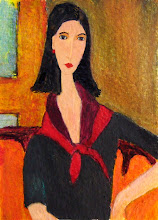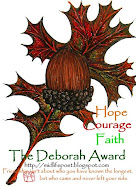“On with the dance! Let joy be unconfined”
Lord Byron
I'm all dressed up, my date is here and the helicopter awaits. I pick up the beautifully embossed invitation to The Third Annual Willow Manor Ball which has been tucked next to the flowers on my bedroom mantle piece and with a whiz, a whir and a whoop we are on our way!
A little background first....
The lady who defined 20th century fashion was born in 1890 into a wealthy and distinguished family in Rome, where she spent her childhood. She was outrageous from a young age, offending the nuns who taught her in her strict Roman Catholic school and disgracing her family when she attended a ball in Paris wearing only a length of fabric wrapped around her body, which promptly unravelled! When she was 23, she travelled to Paris, and then to London, where she met William de Wendt, whom she married the following year. After the birth of their daughter – Gogo - in 1919, The marriage didn’t last - due to financial difficulties and William's unfaithfulness - and the couple divorced in 1920. This left Schiaparelli a single mother, and fuelled her determination to succeed independently in the fashion world. She moved to Paris and met the celebrated designer, Paul Poiret, who introduced her to the art of couture.
Elsa became famous for being superbly original in her designs and marketing. She printed press releases on fabric, for example, and produced fashion shows that were uniquely spectacular. These days such performance in relation to fashion is commonplace; in Schiaparelli’s time it was unheard of. Her collections and shows most often had themes. One collection was inspired by African iconography; another drew inspiration from sailors’ tattoos, and dresses bore snakes and anchors. Other collections included 'Musical Instruments', 'Butterflies', 'The Pagan Collection', 'The Astrological Collection' and 'The Circus Collection'. Each collection of highly original and the often eccentric clothes caused scandal and success.
She had a wide circle of friends, with whom she often collaborated. She was good friends with the writer, filmmaker and artist Jean Cocteau; Schiaparelli once reproduced a drawing by Cocteau on an evening cape in embroidery. She was recognised as an artist by such people as Marcel Duchamp, Picasso and Stravinsky, and closely connected to the Surrealist movement - for example, Schiaparelli’s 'Lobster Dress' was a collaboration with Salvador Dali. This connection with the wider art world set Elsa Schiaparelli apart from most other fashion designers - she was not merely interested in beauty or fleeting fashion trends, but in art, culture, ideas and innovation. Essentially, Schiaparelli was distinctive in her involvement with the wider intellectual and creative world.
I shall be wearing an Elsa Schiaparelli creation of course – she one of my all-time favourite designers. This bronze-gold gown is, I feel, perfect for the time of year. I shall wear it with these shoes – just for a bit of funk – and an African inspired necklet also designed by Schiaparelli.
As my hair is neither here nor there, I will have to wear a hat. I rather liked this one, but Ranulph said that I looked as though I was about to go on safari in the Serengeti.
So instead – and to link to the African theme I chose this…..er…hut. Perhaps a few little yellow diamonds scattered like moon dust would add a certain je ne sais quoi. What do you think?
I’d had decided some time ago to invite Ranulph Fiennes as my (hot) date. He accepted with an alacrity I found utterly charming. I do love the unique combination of reckless adventurer, intrepid explorer, acerbic wit, flawless raconteur, excellent writer and a man of deep – but not overt - familial love. I think you’ll all find him rather entertaining!
Last, but of course no means least, for our most sensational of hostesses, I have a little thank-you gift in the form of some rather luxurious personalized writing paper from the world renown Smythsons of Bond Street just because the lady loves the scent of old paper and words dancing on a page.
Dance, dream, discover, devour - and desire just a tad! Tess, this is too, too marvellous darling. Thank you!

































